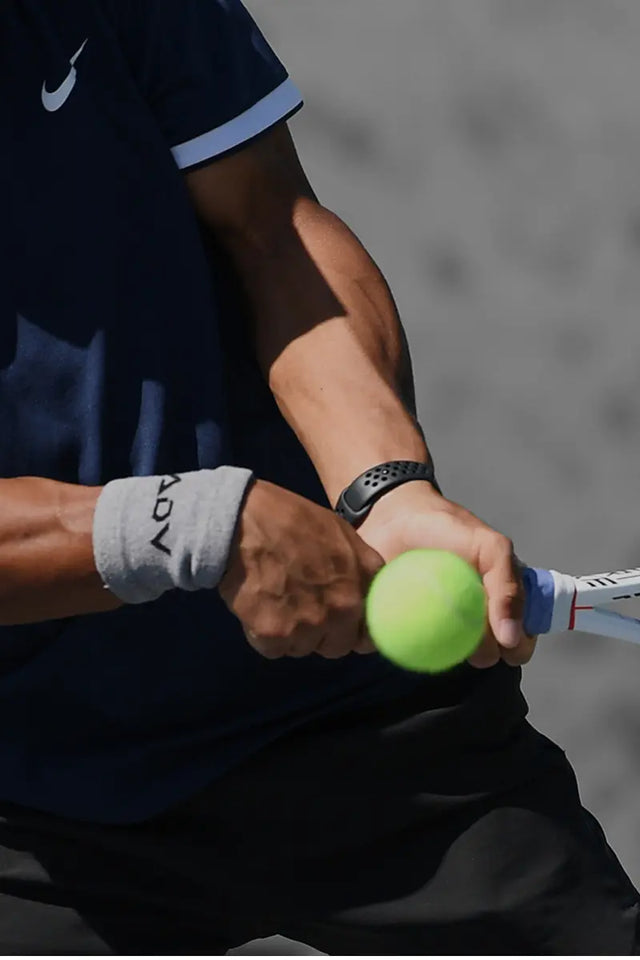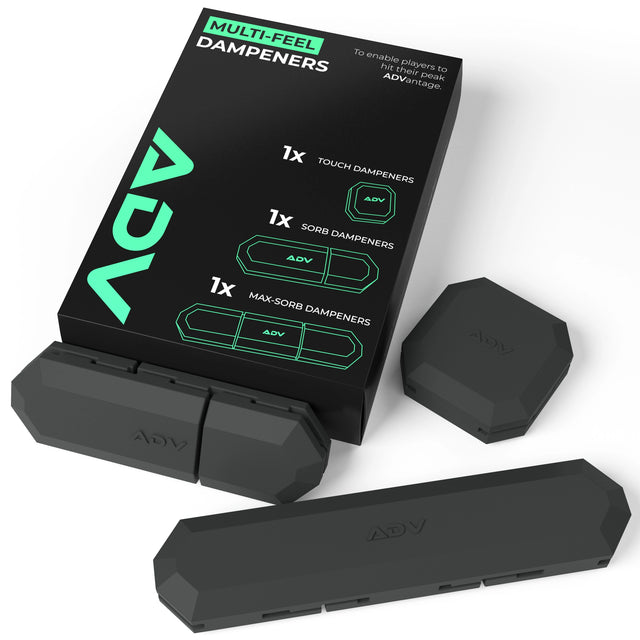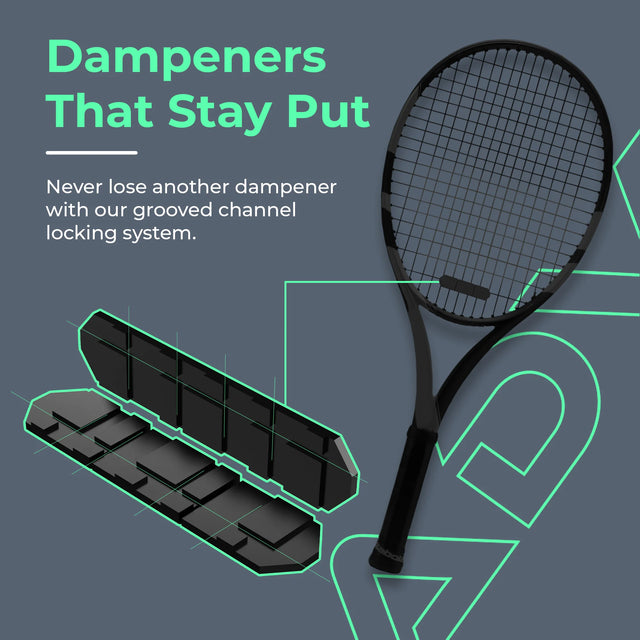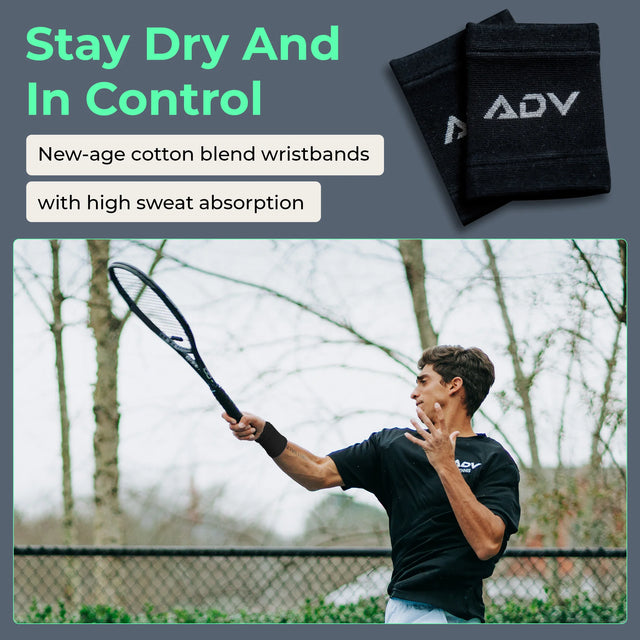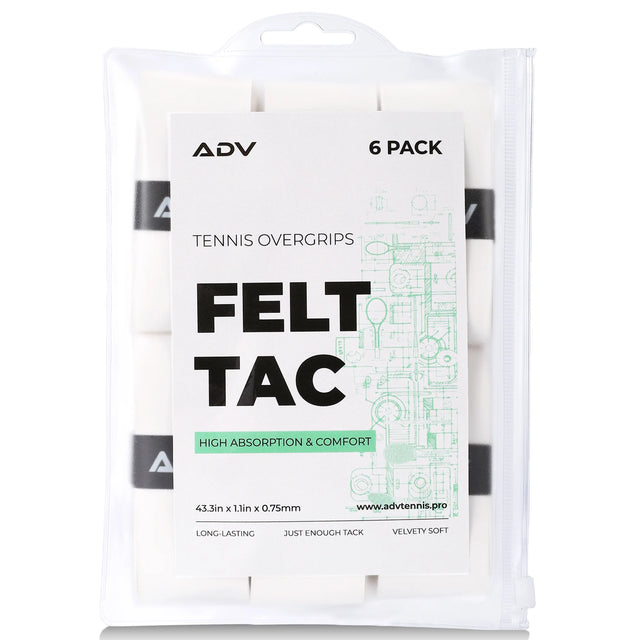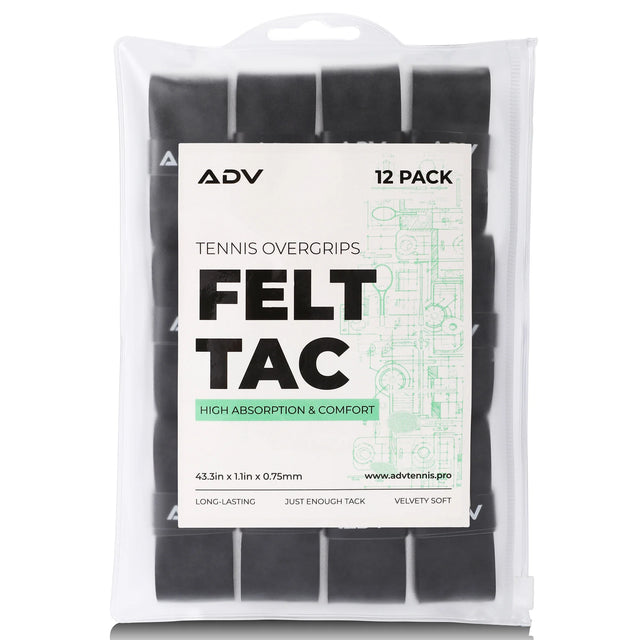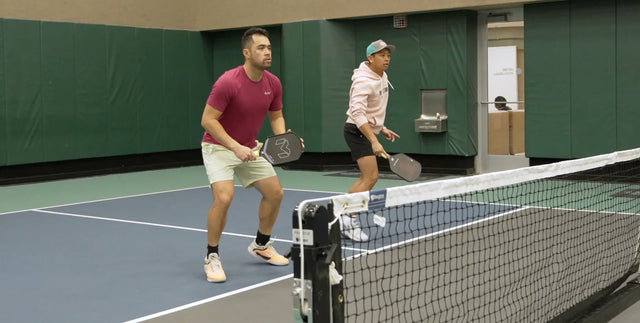Comparing Overgrips: Finding the Perfect Fit for Your Game
Selecting the perfect tennis overgrip is crucial for any player aiming to optimize their game. Overgrips not only protect the base grip of your racquet but also enhance the feel in your hand during play. Whether you're a casual weekend player or a seasoned competitor, the right overgrip can significantly strengthen your racket's handleability, comfort, and performance. It is essential to understand how an overgrip can affect the dynamics of your game, as a good grip can increase the racket's stability in your hand and reduce the risk of slipping caused by sweat.
Exploring Tennis Overgrip Types and Their Benefits
Comfort-Enhancing for Recreational Players
Many recreational players prioritize comfort to enjoy long hours on the court without discomfort or blisters. Tennis overgrips designed for comfort provide a soft, cushioned feel, reducing hand strain during play. These often feature a thicker, more absorbent material that not only enhances the grip but also minimizes the impact of vibrations. There are also distinctions between overgrips and replacement grips, helping players understand their specific purposes and when each should be used. By choosing a comfort-enhancing overgrip, players can maintain a relaxed grip on their racket, essential for casual play where enjoyment is the primary goal.
High-Performance for Competitive Play
For competitive players, high-performance tennis overgrips are vital. These overgrips are engineered to offer superior tackiness and durability, ensuring that the racket stays firmly in hand during fast swings and intense rallies. High-performance ones are typically thinner and made from advanced synthetic materials that provide a fine balance between stickiness and slip resistance. This enables players to execute precise shots with greater power and accuracy, which is crucial for tournaments and competitive matches where every point matters.
Durable Overgrips for Longevity and Value
Investing in durable tennis overgrips can offer long-term savings and reliability. These are made from materials that withstand extensive use and varying weather conditions, making them ideal for players who spend much time on the court. Durability doesn’t just extend the life of the overgrip; it also ensures consistent performance over time, reducing the frequency of replacements. For frequent players, a durable overgrip is a practical choice that strikes a balance between cost and performance.
Lightweight Overgrips for Increased Maneuverability
It is an excellent option for players looking to enhance their racket handling and speed. These lightweight overgrips for tennis are thinner and use less material, reducing the overall weight of the racket. A lighter grip can significantly improve maneuverability, making it easier to swing the racket and change directions quickly. Players who depend on speed and agility to outmaneuver their opponents on the court would especially benefit from this.

Materials and Features: What Makes a Great Overgrip
Important characteristics such as traction, water absorption, texture, comfort, thickness, and design can influence a player's choice of overgrip.
Understanding Common Materials
Different materials cater to various needs, whether moisture management, grip security, or durability. By knowing the strengths of each, you can make an informed decision that aligns with your playing style and conditions.
-
Polyurethane: This material provides an enhanced grip that remains secure even during intense, sweat-inducing matches. The elasticity allows it to adapt comfortably to the racket handle, ensuring a snug fit. Its tacky surface helps prevent the racket from slipping, giving players more control over their strokes. Polyurethane grips are ideal for players prioritizing a secure hold and responsiveness during gameplay. Furthermore, its sweat-resistant nature makes it a reliable option for players who play in humid conditions or engage in long matches.
-
Cotton and Felt: Overgrips made from cotton and felt are valued for their comfort and superior moisture absorption. Cotton naturally wicks away sweat, keeping hands dry and reducing the chances of the racket slipping. Felt adds a soft, cushioned feel to the grip, making it more comfortable for extended matches or practice sessions. These materials suit players who experience significant hand perspiration or prefer a softer, less abrasive grip. While cotton and felt grips may not last as long as synthetic options, their comfort and moisture-wicking properties make them an excellent choice for casual players or those prioritizing a comfortable grip over durability. These materials are also environmentally friendlier than synthetic alternatives, appealing to eco-conscious players.
-
Silicone or Polymers: Synthetic materials such as silicone and advanced polymers are designed to maximize durability and moisture resistance. These grips often feature enhanced longevity, making them ideal for players who frequently use their racket and want to avoid replacing grips often. Silicone provides a smooth, moisture-resistant surface that prevents sweat absorption, maintaining grip consistency throughout matches. Polymers can be engineered to exhibit specific performance features, such as enhanced tackiness or increased cushioning. These materials suit players seeking long-lasting performance and reliability in various playing conditions. Additionally, synthetic grips often include antibacterial coatings, making them hygienic and easy to maintain over time.
Selecting tennis overgrip materials depends on your priorities as a player. Whether you need better moisture control, enhanced durability, or improved comfort, each material offers unique benefits. Understanding these can help you tailor your equipment to suit your needs, ensuring a more enjoyable and effective playing experience.
Tackiness vs. Dryness
The choice between tacky and dry tennis overgrips revolves around personal preference and playing style. Tacky ones ensure a firm hold, ideal for players who exert much power and don't want their hands slipping. Conversely, dry overgrips are better suited for players who prefer a smoother adjustment during strokes and less sticky residue on their hands. This decision significantly affects the feel of the racket and can influence a player's confidence and control during matches.
Environmental Factors
The performance of tennis overgrips can also vary based on environmental conditions. Overgrips designed for humid or wet climates often feature enhanced absorption capabilities and anti-slip surfaces. In contrast, those formulated for colder, drier conditions might focus more on maintaining flexibility and comfort in low temperatures. Players should consider their local weather and the frequency of their competitions in various climates when selecting an overgrip, ensuring optimal performance regardless of external factors.
Popular Tennis Overgrip Styles
It also comes in various styles, each designed to cater to different preferences and playing conditions. Smooth overgrips are preferred for their classic feel and straightforward application, making them a go-to choice for players who value simplicity. Perforated overgrips feature small holes that enhance breathability and moisture management, making them ideal for players in hot or humid conditions. Ribbed overgrips, with their raised patterns, provide extra traction, benefiting players who need additional grip security during aggressive play.
Applying and Maintaining Your Tennis Overgrip
Proper Overgrip Application
Knowing how to apply a tennis overgrip correctly is crucial for maximizing its effectiveness and ensuring comfort during play. The process might seem straightforward, but attention to detail can significantly impact the grip’s functionality and longevity. Here’s a step-by-step guide to help you apply your overgrip correctly:
-
Start Clean: Before applying a new overgrip, remove the old one entirely and clean the racket handle. Residue, dirt, or moisture left on the handle can interfere with the new overgrip's adhesion, leading to uneven wrapping or slippage. Use a damp cloth or a mild cleaning solution to wipe the handle clean, ensuring it’s dry before proceeding. A clean handle creates a solid foundation for the overgrip, preventing issues during play. Skipping this step can reduce the overgrip’s effectiveness and lifespan.
-
Align the Overgrip: Unroll the overgrip and locate the tapered end, designed for easier alignment at the base of the racket handle. Position this end at the very bottom of the handle, ensuring it covers the edge entirely for a seamless transition. Aligning the overgrip correctly at the start sets the foundation for even wrapping and avoids gaps that could cause discomfort. Some players prefer to use a slight angle to begin wrapping, helping to secure the base more tightly.
-
Begin Wrapping: With the overgrip aligned, wrap it around the handle in smooth, overlapping spirals. The overlap should be approximately 1/8th of an inch to provide complete coverage without adding bulk. Maintain a steady wrapping motion, adjusting the overlap as needed to fit the contours of the handle. Wrapping too tightly can distort the grip, while wrapping too loosely can create gaps or slippage during play. Consistent overlap ensures the overgrip remains secure and comfortable.
-
Maintain Tension: While wrapping, keep consistent tension on the overgrip to ensure it stays snug against the handle. Loose wrapping can cause the overgrip to shift, creating uneven pressure points and affecting grip security. Conversely, wrapping too tightly can reduce the overgrip’s cushioning and comfort. Balancing tension is key to achieving a stable and durable grip that enhances your performance on the court. As you proceed, adjust your grip on the overgrip roll to maintain control and precision, ensuring a smooth application.
-
Secure the End: Once you’ve reached the top of the handle, cut off any excess overgrip with scissors, leaving just enough to wrap securely around the final section. Use the adhesive tape provided with the overgrip to secure the end firmly in place. Ensure the tape is applied smoothly, avoiding wrinkles that could create discomfort or loosen over time. Properly securing the end prevents the overgrip from unraveling during play, providing a professional finish.
Taking the time to apply the best tennis overgrips carefully can significantly enhance your playing experience. By following these steps, you ensure a secure, comfortable grip that supports your performance and extends the life of your overgrip. Mastering proper application can make a noticeable difference in how your racket feels and responds during gameplay.

Common Mistakes to Avoid
Several common pitfalls can undermine an overgrip's effectiveness and durability. Avoid wrapping too loosely, which can lead to slippage and uneven wear. Also, be careful not to stretch the overgrip too tightly, which might cause it to tear or reduce its cushioning effect. Another frequent error is inconsistent overlapping, which can create bumps and gaps in the grip, affecting your hand’s comfort and the grip’s overall performance. Ensuring even coverage and securing the grip well at both ends will provide the best results.
Tips for Managing Wear-and-Tear
Regularly maintaining your tennis racket handle grip is key to preserving its condition and effectiveness. Check for visible signs of damage, such as fraying edges, discoloration, or smoothing of overgrip textures, as these indicate reduced performance. Overgrips lose their tackiness with time, making it harder to maintain a firm hold on the racket. This can lead to mishits or unnecessary strain on your hand muscles. Alongside inspecting the grip itself, pay attention to how the racket feels in your hand; if it begins to feel slippery or less comfortable, it’s likely time to replace the overgrip. Frequent monitoring not only prevents sudden slippage during critical moments but also ensures you’re always playing at your best. Hygiene plays a pivotal role in extending the life of your overgrip. One often overlooked but highly effective tip is to clean your hands thoroughly before play. As emphasized before, residual dirt and oils from your skin transfer onto the grip, accelerating wear and reducing its tacky quality. Using wristbands is another smart strategy; they help absorb sweat before it reaches your hands, keeping the grip cleaner and drier for longer. Consider wiping down the overgrip with a damp, non-abrasive cloth after games to remove accumulated dirt.
How Often Should You Replace?
The frequency of overgrip replacement varies among players depending on how often they play and under what conditions. As a general guideline, consider replacing your overgrip when you notice significant wear or a decrease in performance, such as reduced tackiness or discomfort. For frequent players, this might mean changing the overgrip every few weeks, whereas casual players might stretch it to several months. Listening to your hands and noticing changes in your grip comfort and effectiveness is key to timing your replacements optimally.
Where to Buy and Recommendations for the Best Overgrips
Ordering Tennis Overgrips Online
When looking to order tennis overgrips online, selecting a reputable retailer is crucial. Trusted online sports equipment stores typically offer a wide range of overgrips from well-known brands, ensuring quality and authenticity. These retailers often provide detailed product descriptions, customer reviews, and ratings, which can help make an informed choice. Purchasing from established websites often means enjoying better customer service, more favorable return policies, and sometimes earning loyalty points or receiving discounts on future purchases.
Budget-Friendly vs. Premium Overgrip Options
The market offers various overgrips for tennis racquets, from economical to premium choices, catering to different budgets and needs. Budget-friendly overgrips might be less durable, but they can be a good choice for casual players or those who prefer to replace their grips frequently. On the other hand, premium overgrips, while more costly, are made from higher-quality materials and offer better performance and longevity, which might be more cost-effective in the long run for serious players.
The impact of selecting the appropriate tennis racket overgrip extends beyond just physical comfort. It can significantly boost your confidence on the court. When you're not worried about your racket slipping or the discomfort in your hands, you can focus fully on your gameplay. This mental assurance allows you to push your limits, try new techniques, and play at your best. The right overgrip not only supports a better grip but also enhances overall performance, making it a critical component of your tennis gear.
Sources:
-
Jimenez, A. (2024, June 14). The benefits of high-quality overgrips for tennis players. https://www.advtennis.pro/blogs/tennis-gear/the-benefits-of-high-quality-overgrips-for-tennis-players
-
Christensen, J., Rasmussen, J., Halkon, B., & Koike, S. (2016). The development of a methodology to determine the relationship in grip size and pressure to racket head speed in a tennis forehand stroke. Procedia Engineering, 147, 787–792.

